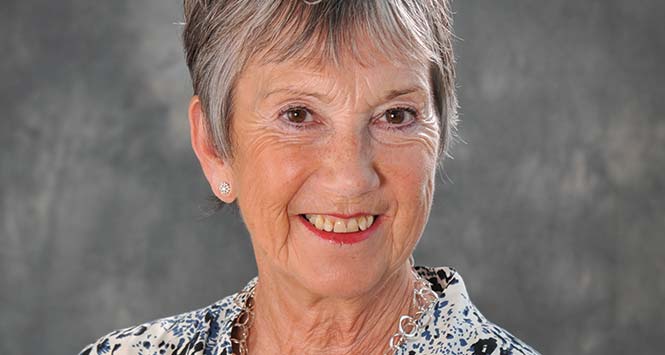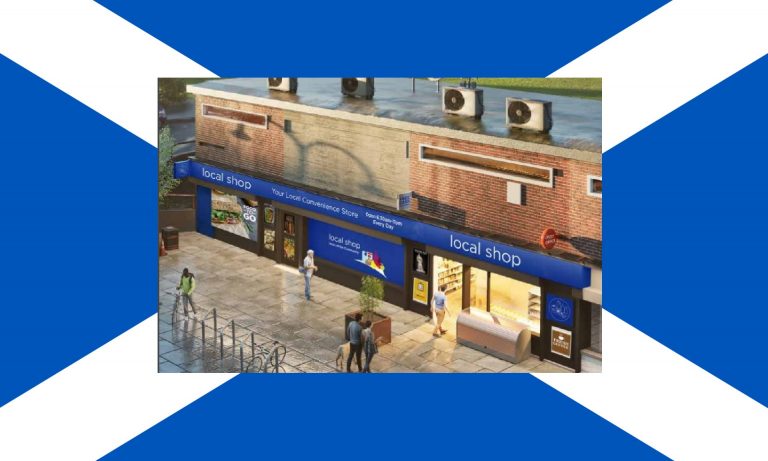The next year will bring with it challenges and opportunities for the convenience sector. Much like every other year then. This spring will see a Scottish election, and a change of Government could see a huge change in policy over many issues that influence convenience. We’ve also got new alcohol legislation coming up, while April’s EUTPD legislation will forever change the tobacco and e-cigs categories.
It is a year of opportunity too though, with the Euro 2016 football and the Rio Olympics providing huge profit potential. There is also the continued drive for progress, with in-store concessions likely to grow in 2016, along with food to go, fresh and coffee to go.
In fact, with the oft quoted ‘little and often’ trend prevailing and the supermarkets concentrating their efforts on fending off the growth of the discounters, 2016 could be a momentous year for the Scottish local retailer. That’s why we asked a cross-section of key figures in the convenience sector to give us their thoughts on what they think matters.
Pete Cheema
Chief Executive, SGF
2016 will be another big political year in Scotland. Whoever wins the Holyrood election will have to grapple with the new powers coming to Scotland, particularly around taxes, and will be preoccupied with finding a way of balancing the Scottish budget while providing quality services. As a result, we might not see a lot of legislation coming our way next year.
What we do know, of course, is that there will be new regulations on e-cigarettes which will age-restrict and make Challenge 25 mandatory for these products. There will also be other big changes in the tobacco market thanks to the EUTPD – start to think about saying hello to plain packs and goodbye to packs of ten!
There will undoubtedly be challenges in other areas, such as calls for a tax on sugar, which will continue to be a hot topic. The big challenges (and opportunities) for retailers will be to find the right footfall drivers for their store and exploit these to the max.
Jill Livesey
Managing Director, him!
 The convenience market saw some tough trading conditions in 2015 with continuous month on month price deflation, and declining shopper footfall. That said, from a shopper perspective the trend for convenience remains a key need.
The convenience market saw some tough trading conditions in 2015 with continuous month on month price deflation, and declining shopper footfall. That said, from a shopper perspective the trend for convenience remains a key need.
Our monthly basket tracker confirms that we continue to shop smaller baskets more frequently; with one in five families now living in a flat or maisonette this is proof that the need for convenience is no short term trend. In fact, Scottish convenience stores attract the highest trip rate, at up to four visits a week.
Looking ahead to 2016 we know the impact of legislation will dominate the headlines and this is now one of the most frequently asked questions at him!, however, it is essential that retailers and suppliers look more closely at shopper behaviour targeting key shopper groups.
Due to the high visit frequency of visits to store, it is not surprising that the number of baskets that feature only one item is high, nearly 40% of baskets, and this has remained static for a few years.
With a low occurrence of impulse purchases, many of those who visit convenience stores are very planned or controlled shoppers.
So what’s the answer? We have to work harder to disrupt and encourage them to pick up even one more item per trip.
First understanding who is your most valuable customer and how to press their buttons is a must, the retired shopper remains the one to protect as the biggest shopping group in Scotland, along with couples with young children and child free couples.
Gerry Begley
Woodlands Local
With only a couple of years in this retail game under my belt, I’m not entirely sure what to expect from next year – but what I can be 100% sure of is the fact that it’s unlikely to get any easier for us retailers.
No matter where you looks there are massive challenges coming down the track for local retailers whether it’s tobacco legislation, constantly increasing wage costs, customers that seem permanently focused on cheap lines or the fact that the discounters seem to be taking over the world.
But in my short career in this industry I’ve already learned that tough trading conditions are pretty much par for the course, so we’ll get up tomorrow morning and get stuck into it just as we always do.
It’s not all doom and gloom. To a certain extent you need to make your own luck, so we’re working on lots of stuff in the shop that we think is quite exciting and hopefully that will pay dividends down the line.
Abdul Majid
Nisa retailer and SGF President

Food to go is must for all retailers in 2016. For larger footfall stores, the franchise option is best suited, but for everyone else it could be as simple as filled rolls. There are many convenience retailers offering a great food to go offer and lifting and buttering rolls is a lot easier and more profitable than lifting and shifting cans of beer. Investing in a good ground coffee machine is a great way to make your store stand out from local competition. The days of a spoonful of Nescafe and hot water are long gone.
The biggest challenge in 2016 will probably be profitability, as retailers will struggle to pass on increasing costs through increased pricing. In terms of tobacco and alcohol, the EUTPD restrictions means retailers could well have more space behind the counter as gantries decrease in size and there will be fewer varieties of cigarettes.
The rise of franchised stores will have a small impact on the sector and they are a great opportunity for those wishing to step back from retailing rather than selling up as is the case now.
Bep Dhaliwal
Trade Communications Manager, Mars Chocolate UK
As consumer spending confidence has risen through 2015, Mars Chocolate UK has seen confectionery continue to be viewed as an affordable treat, with 94% of households purchasing chocolate. Retailers can grow sales by tapping into trends and maximising key occasions.
In addition to key occasions like Christmas and Easter, we can also see an increase in ‘mini seasons’ as in-home sharing continues to grow in popularity. This is something retailers need to bear in mind as they plan for the year ahead. To leverage these consumption moments and drive incremental impulse confectionery sales, it’s imperative that footfall-driving brands are readily available in-store.
Evening snacking has become a huge area of growth in recent years with in-home chocolate occasions growing by 20% since 2009. As a result of this, sharing favourites have seen massive success making them must-stocks for retailers in 2016.
Scott Graham
McLeish Inverurie
The impending Scottish elections will not impact us much as I suspect. Legislation will continue to provide challenges and so it’s vital to be aware of incoming legislation and share ideas on how to approach it. I think in 2016, franchise will continue to grow and every business will need to decide if it is right for them or not. Wholesalers and suppliers must work harder and smarter with their retailers to help grow not only their own business but also the retailer’s business. With changes to minimum wage and pensions, we will have to look at costs and the possibility of raising prices, but we must also work the store smarter and harder, using technology, supporting local suppliers, growing fresh sales.
We must also keep an eye on shopping habits. This year has seen a new customer trend with generation C dropping the weekly shop and topping up little and often – they visit four different c-stores a week. How do we make them visit our stores more often? When they do, how do we make sure we have what they are looking for or give them ideas on what to buy? By clever merchandising, meal solutions, a great fresh option and a fast and friendly service.
Tim Billson
Senior Retail Analyst, Convenience, IGD
We are seeing channels blurring in the grocery sector, looking to take a slice of convenience missions. Discounters are opening in high street locations, big box stores are using the front of store as food-to-go shops, and even online is becoming more attuned to the little and often shopping trend. It’s becoming about convenient shopping and serving missions rather than the size of the store.
Opportunities will come for those retailers who really understand their shoppers’ needs and missions, and stock a range and create a logical store layout that truly reflects these missions.
Independent c-stores have an ability to engage with the local community. Offering other services such as a Post Office, parcel collection or a foodservice concession can help a store to become a hub for the community and attract non-grocery shoppers.
Convenience operators can continue to capture the top-up pound by delivering value for money and creating excitement in-store through relevant promotions.
There are some big events on the horizon in 2016, including the Olympics and the Euros. While space is a premium, understanding what products sell well during these events, ensuring great availability and how to push these products without the need for big displays will create a win for the retailer in 2016.
Alan McVey
Business Sector Controller – C&C and Impulse, Maxxium
Looking ahead to 2016, independent retailers have a great opportunity to maximise their sales within the convenience sector.
As we have already seen, shoppers are no longer habitually visiting the large stores for their weekly shop and this provides a chance for independents to challenge for their share of the shoppers’ spend. This doesn’t come easily, therefore retailers need to closely review their store offering to ensure that they are providing a real point of difference to help them stand out against their competitors.
With increased legislation coming through, retailers need all of the support that they can get as time is precious in store.
This can be achieved with the help of suppliers across the categories to ensure that they have the correct offering. By understanding their shoppers and their needs more closely will better allow them to tailor an offering in store to attract a more regular and hopefully a higher spending customer. We look forward to 2016 with relish and wish all of our customers the very best for the year.
Mark Baird
Head of Alcohol in Society, Diageo GB
Well, another year looming and even more new alcohol policy on the horizon in Scotland. No, really! As the Scottish Government rejects Dr Richard Simpson’s private member’s Alcohol Bill, we are promised “the next phase of the alcohol framework”, which may contain certain elements of Dr Simpson’s proposals, sometime in 2016.
There are 40 measures in the current alcohol framework, many of which industry supports, such as: support for alcohol brief interventions, support for substance misuse education in schools and promotion of the Young Scot proof of age card. But there are concerning noises coming from Holyrood around a desire to create further restrictions on alcohol marketing and advertising, which the Scottish Government currently has limited control over.
We already have very stringent regulations around alcohol marketing in the UK, especially around underage protection, and our system of self-regulation is recognised worldwide as an example of good practice. Perhaps we could try employing the principle of “If it ain’t broke – don’t fix it”?
Shahid Ali
Nisa retailer
The first challenge of 2016 will be the multiples marching back into the convenience space. You can see that their convenience stores are growing and superstores are not. If you take Tesco Express, they are all in high footfall areas, but they might start looking at less urban areas and think if the Co-op can do it why can’t they. Aldi and Lidl will grow unchecked. There’s a space between 5,000 and 20,000 sq ft that they completely own and I can’t see that changing. I think councils welcome them as they can provide healthy produce at cheap prices – that is a big challenge for indies. The Government’s benefit cuts will also have an impact on local retail. A lot of retailers are realising a lot of their customers rely on benefits and if they are cut the luxuries like alcohol and snacks might also be cut. That’s not good.
It’s not all bad though; it’s exciting times. Store standards are up and sales are up in all four of our stores. We’ve invested in e-learning and all staff are getting more training. By improving standards we can show shoppers that a local retailer is just as good as a supermarket, but with much better customer service.
Jeremy Blackburn
Head of Communications, JTI
To help retailers navigate their way through the challenges that lie ahead JTI has produced a guide that provides the key facts and dates relating to the EU Tobacco Products Directive. The document is free and downloadable from www.jtiadvance.co.uk. This is the first step in what will be a continued, pro-active programme of support from JTI ahead of the legislative changes. The message for the time being is business as usual – maintain range and availability so that your shop remains a destination of choice for existing adult smokers.
As proven by retailers who took action to prepare ahead of the retail display ban, preparation is key, use ARTIST as a guiding principle to continue to maximise tobacco sales and speak to your JTI sales rep or visit jtiadvance.co.uk for support and advice.
David Livingstone
Regional Controller, Bestway Batleys
The impending Scottish elections will not impact us much as I suspect another SNP victory is likely, while the legislation on tobacco both in terms of Plain Packaging and EUTPD, although taking effect in 2016, will not truly kick in until 2017 as retailers have a year’s grace to sell through product.
The proposed sugar tax on soft drinks may affect sales but if it becomes legislation it may not be as dramatic as some forecast. The vast majority of branded and own-label soft drinks are now available in low sugar or sugar free variants so if there is a slap of 20p on a unit, consumers can always opt for a less sugary alternative. As always it is all about giving the consumer a choice and it is then up to them what they purchase. A worry may be that any tax is also applied to confectionery and other areas where low sugar alternatives are not as readily available.
The main thing is that retailers continue to serve their customers and communities through fantastic personal service, effective promotions and making the transition to mission shopping (matching products to consumer occasion needs). If our customers continue to do this then the future is extremely bright for retailers.
Dennis Williams
Premier retailer
 There’s going to be more of a focus on top-up shopping over the next 12 months, even more than there is currently. That’s good news for convenience stores as it means consumers are likely to be buying bigger baskets as they become less loyal to the supermarkets. That doesn’t mean it’s going to be easy. The discounters continue to cause problems, and we’ve got an Aldi opening on our doorstep, so we’ll have to be ready for that when it comes, and we’ll do so by doing what we do best: provide a great service for our community. The EUTPD changes are another concern; it will lead to a huge increase in the illicit trade.
There’s going to be more of a focus on top-up shopping over the next 12 months, even more than there is currently. That’s good news for convenience stores as it means consumers are likely to be buying bigger baskets as they become less loyal to the supermarkets. That doesn’t mean it’s going to be easy. The discounters continue to cause problems, and we’ve got an Aldi opening on our doorstep, so we’ll have to be ready for that when it comes, and we’ll do so by doing what we do best: provide a great service for our community. The EUTPD changes are another concern; it will lead to a huge increase in the illicit trade.
In 2016 I think we’re going to see more concessions appear in stores although I’m not convinced coffee is for everyone – that bubble will burst.
In terms of stores, franchises seem to be growing in popularity and I think there could be further consolidations in the symbol sector. As for increasing sales, there’s going to be opportunities, such as the Euros and the Olympics, so get involved, go big on in-store theatre and work with suppliers – get all the support you can!
Paul Yates
Territory Manager – Scotland, JET
The days of forecourts focusing solely on fuel are long gone. Today it’s all about delivering convenience on many different levels. Time poor consumers are looking to ‘tick off’ as many items as possible on their lists under one roof and this present a huge opportunity for forecourt owners.
Coffee is a great example of a convenience trend that the more forward-thinking forecourt operators have embraced. Historically most coffee drinkers would have shuddered at the thought of picking up a coffee at a forecourt, but nowadays it’s almost becoming an expectation that a modern forecourt offers quick and convenient access to a quality bean-to-cup coffee.
And sales are not to be sniffed at: JET Maybole in South Ayrshire sells on average 60 cups per day from its self-serve Costa Coffee machine. With a profit margin of 40%, it’s a no brainer for owner Brian Connolly.
Another retail trend we’re likely to see more of in 2016 is the growth of click and collect. In a recent report, Deloitte predicted that the number of click and collect locations in Europe will reach half a million in 2015, a 20% increase on 2014. Revenues from click and collect more than doubled in the UK between 2012 and 2014, reaching £5.6bn from 140 million orders.
Forecourts have a real opportunity to drive footfall by becoming ideally-placed collection or delivery points for online orders.
Stephen J. McGowan
Head of Licensing (Scotland), TLT Solicitors
Convenience stores will be pleased that the proposed Alcohol Bill from Dr Richard Simpson does not have Government support. This means that bans on certain alcohol products, increased periods for application notices and so on appear to have hit the wall. But the Air Weapons and Licensing (Scotland) Act 2015 will be coming into force in 2016, possibly in stages, so the march of regulation and red tape continues.
Other suggestions, such as separate tills for alcohol, do not appear to have gained any traction as yet with the Government, but if they do ultimately lose the minimum pricing case they may revisit all of this and introduce alternative provisions to deal with alcohol related issues.
Another proposal, to bring the so-called “social responsibility” levy back from the dead, was put forward by former Justice Minister Kenny MacAskill but again the Government does not appear moved on that front quite yet. This levy would apply to local stores and shops as well as pubs and clubs and would in effect be an additional tax the aim of which would be to raise money to put towards alleviating the societal effects of alcohol abuse.
Ross Kerr
Programme Director, SGF Healthy Living Programme
The dietary challenge facing the Scottish nation is as big as ever, but there is no doubt that convenience retailers in Scotland are helping the cause quite considerably. The exciting challenge that is ahead is to make a success of featuring and promoting the ‘other’ healthier options in store outside of fruit & veg – while of course still pursuing the good work that is already happening with fruit & veg in the sector.
Other products within other categories are at the same stage that we were with fruit & veg when the Programme started in 2004. Consumers are aware of the hype behind the need to ‘eat better feel better’ (as our slogan says) and not a day passes without reference to it either in the press or TV.
The SGF Healthy Living Programme team has some great ideas to help develop these other categories and we look forward very much to discussing these early in 2016.
Tobacco Manufacturers Association spokesperson
The Tobacco Products Directive makes sweeping changes that will affect pack sizes, labelling, ingredients and brand choice of an already highly-regulated and legal product. As 57% of the UK cigarette market is sold in packs of less than 20 cigarettes, and 79% of the UK hand rolling tobacco market is sold in quantities of less than 30g, the Directive will have a significant impact on Scottish businesses throughout the supply chain, particularly smaller independent retailers. This will create a huge profit opportunity for criminals and racketeers and deliver very little for public health.
Kate Salmon
Chief Executive, Scottish Wholesale Association
There are always opportunities if you seek them out. I think retailers – and wholesalers – acknowledge that consumers now are shopping locally more frequently so it is important for them to offer as many attractions as possible i.e. food to go and coffee, both of which are a must now, not a luxury. I think retailers also need to consider focusing on niche categories such as craft beer – look at the amazing work being done in this area by our member JW Filshill through its Craft Beer Clan division.
Ongoing legislation in a number areas could affect the sector and, of course, there is concern about the potential impact on employment of the new national living wage, which will come into force in April of 2016.
Regardless of which party is power following the Scottish election we still have to face the same challenges and must work with the Government of day to help them understand the many issues facing our industry. It is imperative that we all get closer to our local MSPs and MPs so we can explain to them what the issues are in relation to specific proposed legislation.
Phil Knox
Head of Business Development for Scotland, Costcutter Supermarkets Group
The demand for fresh will continue to grow and it is no longer a ‘nice to have’, it’s a ‘must have’. Food to Go continues to grow, particularly around coffee but the offer needs to be more than this, offering hot and cold options. Meal solutions is another big area for convenience retailers. Offering an end-to-end meal for tonight solution at a decent price will help drive sales across the store.
Events play a very important role in the retail calendar and retailers should use them to engage customers. Promoting the right offer at the right time is crucial.
The role technology plays in the independent sector is going to increase significantly, both to create greater efficiencies within store operations and also as a way to drive greater customer engagement and footfall.
Retailers shouldn’t underestimate the importance of getting the basics right; delivering the right range at the right price, integrated with a high quality own brand. Where independent retailers can really win is through giving exceptional customer service and having a truly local offer that meets local demand, something the multiples and discounters cannot achieve.
More than ever retailers must ensure they offer a first class store and service that truly meets the needs of their customers and this includes having the right partner for their business with expert support to drive footfall.








